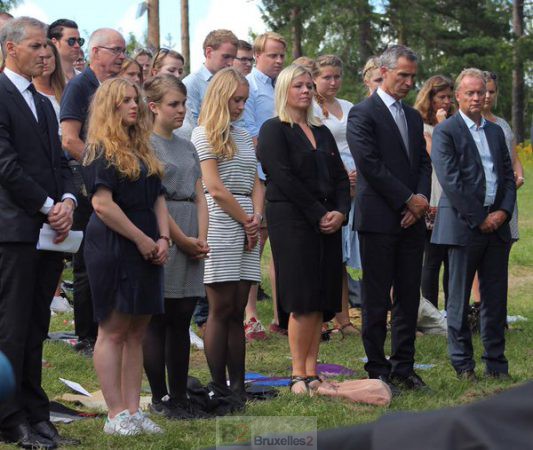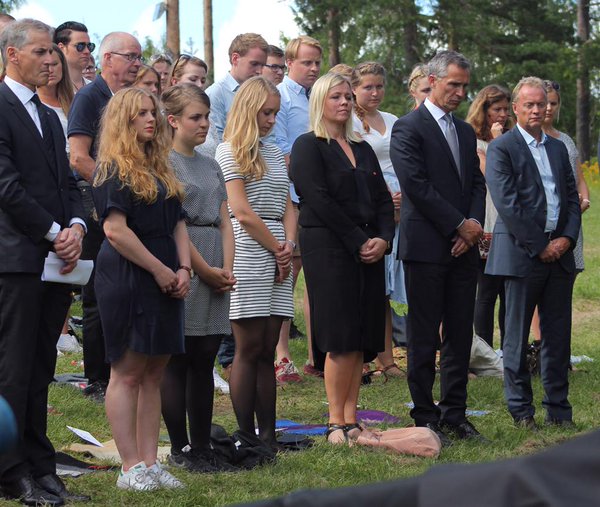Massacres with semi-automatic weapons… To refresh your memory

(BRUSSELS2) Without going back to the 1980s, the past ten years have been dotted with “incidents” that make people shudder. The scenario always seems the same. An individual buys a weapon entirely legally, sometimes enrolls in a shooting club, goes off to commit a real massacre, with on arrival, each time, a balance sheet which amounts to a number of lives lost. important. Often young! The toll of each killing is equivalent to that of a 'medium' intensity attack.
Arms lobbies that claim that banning certain weapons is an attack on individual freedom, or property, and that a stricter framework for the legal arms market would have no bearing on the exaction of crimes, are committing a heavy deception. There is no right to carry a weapon, just for fun in Europe. On the other hand, there is a right to public security.
Weapons acquired legally can kill just as much as weapons acquired illegally. It's not just the illegal arms market that fuels crime. Facts are stubborn. Several attacks with automatic or semi-automatic weapons have been committed in the last ten years in Europe, by people, well in all respects (apparently), having acquired their weapons completely legally and registered in shooting clubs, often.
The use of semi-automatic weapons reached its climax with the massacre committed in Utoya in July 2011. Anglo-Saxon and Nordic countries seem to be more affected by this wave (perhaps because of the number of weapons that are in traffic). But no country seems immune. This is a problem that should not be overlooked today.
November 7, 2007, Jokela (Finland). An 18-year-old, Pekka-Eric Auvinen, appears in his high school in Jokela. He shoots, killing eight people (5 high school students, 2 high school girls and the high school principal) before committing suicide with a bullet in the head. A dozen injured are also counted. Auvinen had received his firearms license a few days earlier, in October, then purchased a semi-automatic (SIG Sauer Mosquito 22 caliber) and 500 rounds of ammunition. He had been a registered member of the Helsinki Shooting Club since August 31 and had attended a one-hour training session.
September 23, 2008, Kauhajoki (Finland). A similar incident takes place a year later on the campus of the University of Applied Sciences in Seinäjoki. 22-year-old student Matti Juhani Saari arrives masked, shoots, kills ten people (8 female students, 1 student, 1 teacher) with a Walther P22 semi-automatic pistol, before shooting themselves in the head. The assassin, again, was a member of a local shooting club and had just before (August 2008) obtained a license for a .22 caliber (5,6 mm) pistol. He had even been questioned the day before the massacre by the police after having broadcast a video showing him practicing shooting, without removing the weapon.
March 11, 2009, Winnenden (Germany). Rebelote, this time in Germany. A 17-year-old student, Tim Kretschmer, shoots at a secondary school, the Albertville-Realschule college (which he had attended a year earlier). He is armed with a Beretta 9mm semi-automatic pistol. Assessment: 15 deaths (eight girls and a boy, three teachers, a passer-by and two car dealership salesmen) + the attacker who commits suicide. Tim Kretschmer's father legally owned 15 firearms as a member of a local sniper club (Schützenverein). The weapon used by Tim is found missing from this stockpile, along with several hundred rounds of ammunition. Fourteen of the guns were kept in a safe. But the Beretta was in the bedroom. Criminal proceedings are instituted against the father for negligent homicide. A debate begins on the need to strengthen arms control. Despite the weight of shooting clubs, this leads to the creation of a national arms register (instead of a registration by Länder).
June 2, 2010, Cumbria (United Kingdom). Sniper Derrick Bird kills 12 people and wounds 11 others before committing suicide. One of the worst gun crimes in British history. Bird was a licensee of firearms. He fired a total of at least 47 rounds in most shots (29 from his shotgun, 18 from his .22 long rifle). He had a real arsenal at home: more than 750 22 mm bullets, 240 shotgun bullets.
April 9, 2011, Alphen aan den Rijn (Netherlands). Tristan van der Vlis, 24, burst into the Ridderhof shopping center, about 33 kilometers southwest of Amsterdam. Dressed in a bulletproof vest, he shoots. Assessment: seven dead (six on the spot and one injured later died) + the killer, and 16 injured. The author was a member of a shooting association and owned three firearms: a Smith & Wesson M&P15-22 semi-automatic, a Colt M1911 .45 caliber pistol, and a Magnum Taurus Raging Bull revolver. 44. He has a history of psychological and psychiatric problems (including paranoid schizophrenia). The event in the Netherlands sows emotion. The Prime Minister is then, Mark Rutte, still at the head of the government.
July 22, 2011, Utøya (Norway). Anders Behring Breivik broke into the Labor Party's youth summer camp. Armed with a semi-automatic pistol (a Glock 34 with a 17-bullet magazine), a Ruger Mini-14 semi-automatic rifle and some 3000 cartridges, he will roam the camp sowing death as he goes. He shoots 121 times. Assessment: 69 deaths and more than a hundred wounded. Most are very young: 14 to 19 years old. It is part of the Norwegian youth that is broke. They are in addition to the 8 deaths committed by the same individual in a bomb attack against a building housing the headquarters of the Labor Party in Oslo (the leader of the party, Jens Stoltenberg, the current Secretary General of NATO, is fortunately absent). Breivik had a hunting license and was a member of a gun club.
(NGV)

